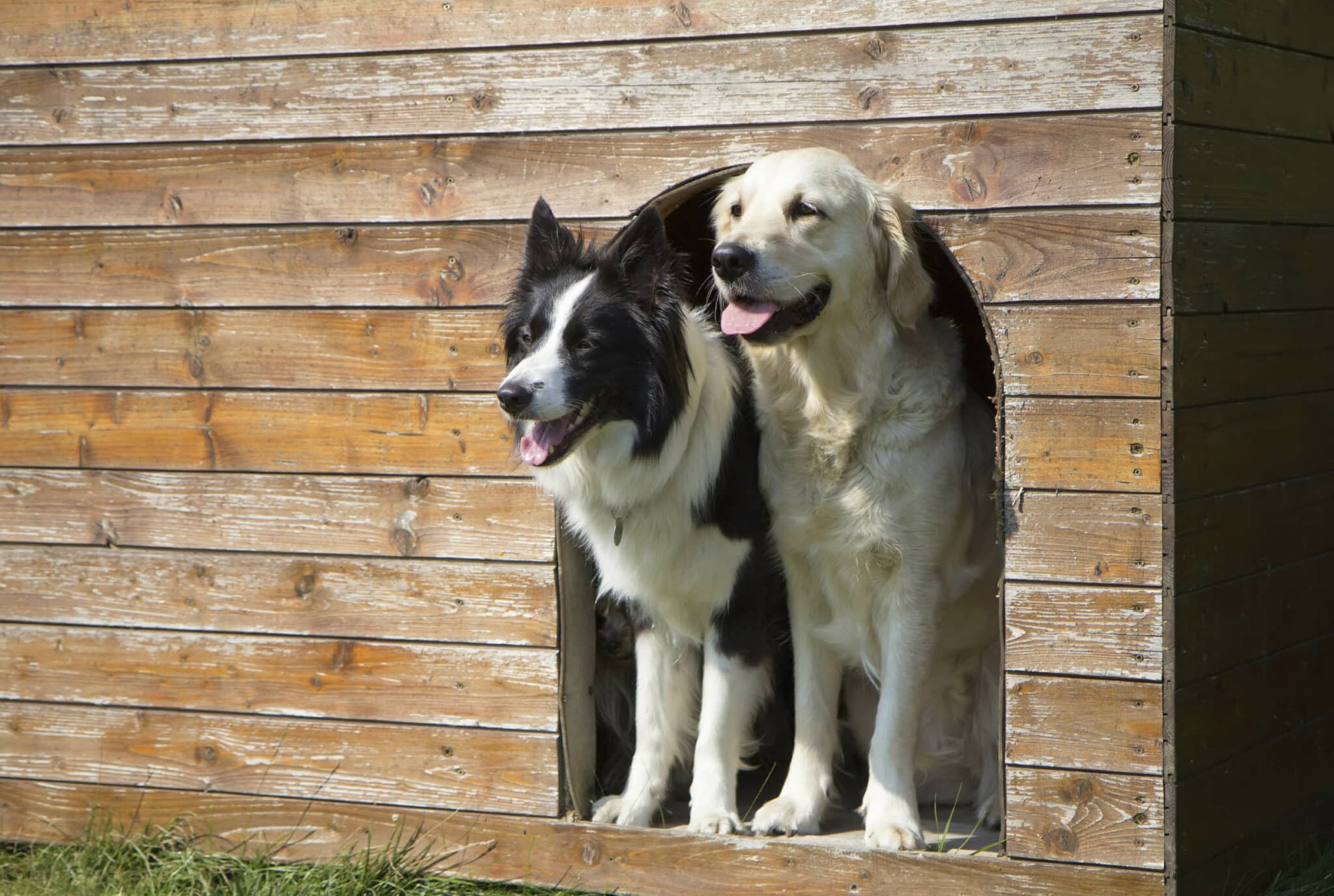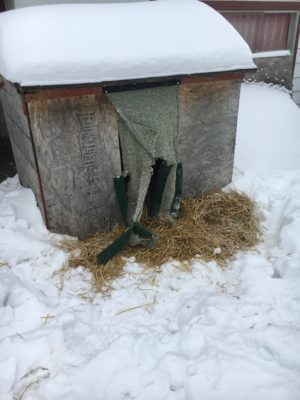
Tips for Building a Winter Dog Shelter

Winnipeggers know that it’s only a matter of time before the first snowfall hits. Earlier this year, the Investigations & Emergency Response Department discussed what an appropriate outdoor dog shelter would consist of for the summertime. For this month, we would like to focus on appropriate winter dog shelters, as the requirements will change in order to accommodate our extreme temperatures.
While some breeds are built more for the colder temperatures, all dogs still require a form of shelter if they are going to be outside for longer periods of time. While a husky may be able to withstand colder temperatures better than a short haired breed, they cannot be left out for extended periods of time without an appropriate set-up. Even if the dog chooses not to use the shelter, it must be provided to allow the animal the opportunity to get out of the cold winds. During severe weather conditions, it is recommended that outdoor dogs with dog shelters still be brought inside.
A winter doghouse should consist of the following:
– It should be large enough for the dog to comfortably sit, stand and lay down in. Any larger and it will not retain heat.
– The walls should be thick and insulated to provide appropriate protection for our extreme temperatures. The exterior of the doghouse should be made from a hardy material, such as plywood rather than plastic.
– The door should be covered with a flap, to prevent wind from entering the doghouse. It also should be placed more to the side of the dog house rather than in the middle, so that the dog can lay down without being directly in front of the door.
– The dog house should be raised off the ground (with bricks, a wooden pallet, etc.), so that there is a barrier between the frozen ground and the dog house floor.
– We suggest using straw and changing/adding as necessary. Appropriate bedding material must be provided. Blankets are never recommended, as they will become wet and freeze.
– Be mindful of where the doghouse is located in the yard; it should be facing a direction where the least amount of wind will hit it.

An adequate source of clean liquid water must be provided. While a dog may want to eat snow, it is not considered an adequate source of water. Not only can it be potentially dangerous to your dog, as snow is often mixed in with contaminants (such as road salt), it can lower your dog’s body temperature and put them more at risk of hypothermia. Outdoor dogs may also require an increased diet, as they are burning more calories to keep warm. So please ensure that you’re adjusting their meal sizes accordingly.
The photo to the left is a picture of an appropriate doghouse: it is double walled with plywood on the outside and drywall on the inside. The door is covered to help prevent the wind from entering the shelter and the floor is insulated with dry straw. There is also a heat lamp inside the doghouse, placed in the roof, to help warm the shelter.
Visit our website for general instructions on what would be required to build your own outdoor doghouse. You can also come down to the shelter and ask for our brochure on ‘The Ideal Insulated Outdoor Doghouse’.
For the month of September 2019, the I/ER team attended 149 animal welfare concerns, 59 animal related emergencies and 50 jobs for a variety of other tasks
For Animal Emergencies within the City of Winnipeg, call 204-982-2020
To report an Animal Welfare Concern within the City of Winnipeg, call 204-982-2028
To reach our Intake Department call, 204-982-2021 option #5
To report an Animal Welfare Concern outside of Winnipeg, call the Animal Care Line at 204-945-8000 or toll free 1-888-945-8001
To report Winnipeg Bylaw concerns (dogs running at large, barking complaints), contact 311

